CES 2007: Live Report

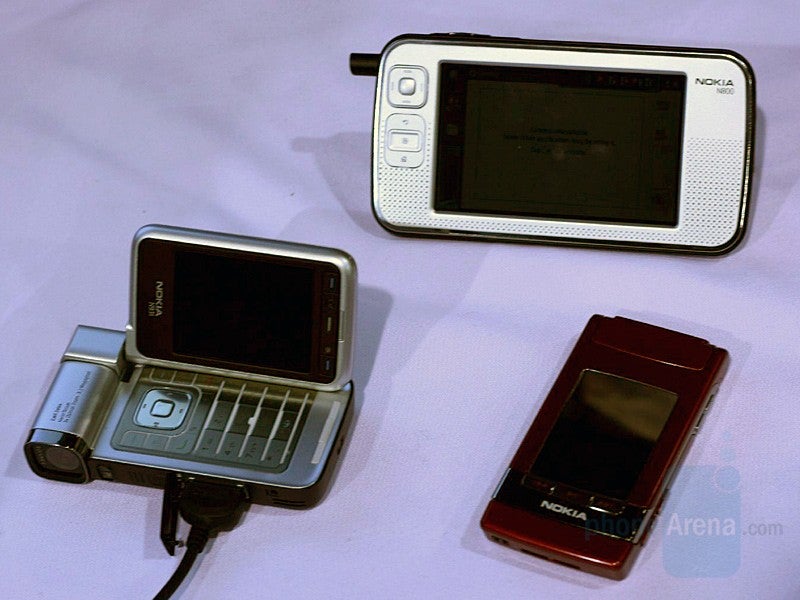
Nokia N93i, N76, N800 Internet Tablet
The slim profile does not come at the price of functionality – the Nokia N76 is Symbian S60 smartphone; as a multimedia phone, it packs 2-megapixel camera, a couple of color displays and music player with control keys on the front cover. We are glad to notice the 3.5mm stereo jack for usage of headphones, as the phone is advertised as music device.
N76’s displays are relatively big, with the internal one being 2.8 inches unit with QVGA resolution and 16 million colors, while the external one has 128x160 pixels. We will not argue – the time has long passed when Samsung was the undeniable leader when it came to vivid and colorful displays. Nokia was able to catch up and in some cases actually surpass Samsung. The N76 is a pure example of this – showing extremely sharp and vivid colors, with high detail and contrast.
Manufacturing a slim phone requires using a flush keypad. Comparing the N76 with the RAZR’s for example, we definitely will choose the N76. The keys are textured with vertical lines running across each key, plus each key is separated from the others making them more easy to feel without looking. The keypad has decent key press feedback and strong backlight.
The 2 mega pixel camera could be used with the phone closed. To control the different camera settings, the front keys which the rest of the time play the role of music controls are used. To switch from image to video capture, there is a dedicated key next to the camera one.
We are actually surprised that Nokia just gave the N93 the "i" upgrade. Nokia has been know for always trying to give its phones a new model name, no matter if the "new" phone is just a different color version.
This time, Nokia instead of touting the N93i as "leave your regular digital camera at home" device, actually ask you to leave your video camera at home. We feel this is something we can actually agree on doing. We were allowed to taka a few images with both N93 and N93i and actually compare them. We were asked to explicitly say this: "The image software on the N93i is not final and the final version could produce different (better) results". Please keep in mind - in the cameras of this class, the imaging sensor does play the major role. The second component is not the "super-duper" Carl Zeiss optics, but the software which processes the raw images. So Nokia had a point in asking us to put the disclaimer.
We were one of the few if not the only one allowed to take samples shots with the new N93i. We can not comment on the overall performance of its camera, since we were able to take just a few pictures in the dark show-floor of the CES expo. What we can comment on it how it compares with the N93 in the same conditions. Overall, the images are almost identical - brightness, contrast, details - everything. The only major difference we noticed was the a lot stronger Noise Reduction system - the low light images were a lot more smoother and with less visible noise.
Its video camera performance was very good for a phone - no trace of the usual "lag" and low frame rate usually seen in lower-end devices.
Nokia got this right - slightly improving the camera performance and slapping an "i" is not enough today. The consumers demand smaller, lighter devices they can carry around. If one didn’t care about the weight and the volume, he would have a laptop, stand-alone digital camera, Ipod and regular digital camera all the time. The idea of the converged device is to have one gadget which is small enough to have be carried all the time, but still to perform reasonably well. The N93 was not that device – way too bulky, way too heavy for everyday use. The N93i is definitely not a RAZR, but is definitely a move in the right direction - smaller and lighter.
Model | Dimension (Inches) | Dimension (MM) | Weight (OZ) | Weight (Gramms) |
Nokia N93i | 4.25" x 2.28" x 1” | 108 x 58 x 25 | 5.7 | 163 |
Nokia N93 | 4.65" x 2.18" x 1.1" | 118 x 55.5 x 28 | 6.3 | 180 |
Improved are not only the dimension, but as well as the front of the phone. Now it is all glossy black, with an OLED screen hidden below it. It is the same resolution of 128x36 pixels as the one on the N93.
The hinge is still the same, allowing the N93i to be opened as a regular clamshell, as well as twisted and oriented as "camcorder" style.
The other major difference is the keypad. Unlike the N93 one, which has the top part (d-pad, soft-keys and few shortcuts) completely separate from the bottom ones, the N93i one continues and there is not clear division between both. The keys are now also more flush but it is really a personal preference which ones you like.
The last "new" phone Nokia had for us was the 6131NFC. Nokia 6131 NFC is actually the well-known 6131 clamshell. It is absolutely identical in design and features, except the additional Near Field Communication technology. In a nutshell, NFC allows very short range communication between two devices. Currently it is used mainly in ID cards which when brushed against a reading surface would grant access to a building or room. A small chip inside the ID card sends information when in very close proximity to a reading device and by close we mean really close - the maximum distance is about 7 inches, while usually the device slightly touches the activation surface.
At CES, Nokia had several demos of the NFC technology. The first one was printing a picture taken with the phone by an NFC/Bluetooth printer. Since the NFC works at very close proximities and is relative slow, it is used just to initiate a Bluetooth connection between the phone and printer, and then the actual pictured is transferred via Bluetooth. Similar demonstration, but with a picture frame was also shown.
The last demo was finding a restaurant and transferring its info to your phone. There was a rectangular poster with several placed shown on it. You choose one and point the 6131 to it. Then the restaurants phone and address are transferred to your phone.
In the future, NFC will be part of every phone. The time to carry small change or even credit cards will be forgotten - no need for them when you would be able to just waive your phone and the payment information transferred. Exchanging contact information should also be a breeze - just touch the other person’s phone. Want to pair two Bluetooth/Wi-fi devices? - No need to enter codes, initiate discovery etc - just touch them.
During the event, Motorola announced the MOTORIZR Z6 slider, which is an upgrade to the Z3 - the first RIZR phone.
The new phone has very similar design, but it is not exactly the same - the keypad design is different and interestingly similar to the one of the original RAZR, while the RIZR’s is like on the KRZR. In our opinion, the difference is just a cosmetic change and is driven by the idea to show a change, proven by our tests, which showed that both keypads performed equally well. Another change is the substitution of the internet shortcut key with a music player one and making the d-pad left/right positions to act as FF/REWIND for the player.
What Motorola have tried to do is the Z6 is to mainly enhance the Z3’s “fashionable” look by using glistering metallic finish on the phone’s front and adding a few round “tattoos” on its back. Did they succeeded? – it all depends who do you ask.
Motorola S9 is a stereo headset targeted at the active people - it is light device with small earpiece and body protected from water and sweat. Bluetooth technology helps you remove the wires, as the S9 supports A2DP and AVRCP profiles to connect with compatible devices.
At the show, Motorola showcased their HSDPA-capable RAZR – the V3xx, with the Cingular logo on it. Although it is still not officially announced, it seems that the US carrier will offer the phone in future. Overall, it is mid-class slim clamshell, with 1.3-megapixel camera, microSD and music player – the previous 3G RAZR (V3x) packed 2-megapixel camera and different design; the V3xx is very similar to the very original V3 RAZR in design, and its keyboard is almost the same (with curved lines between the separate keys).
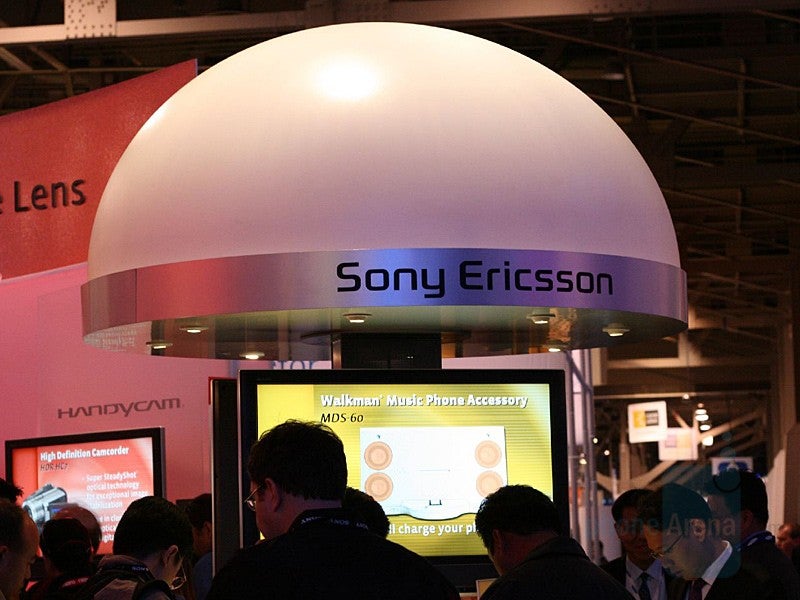

As always, Samsung was waiting for us with a few new phones in their booth. Let’s start with the SCH-i760, a Windows Mobile device with full slide-out sideways QWERTY keyboard and numeric one. The phone should not be confused with SGH-i760 which is a European/Asian GSM phone with vertical slide-out keyboard, and support for UMTS/HSDPA, while the new i760 is a CDMA for the States. The model that was on the CES floor did not have a battery installed, so we were prevented from starting it up and validating earlier rumors which described the new device as running the new Windows Mobile 6, codenamed Crossbow. Despite our advancing questions and different tactics, we could not find our for sure which OS the phone will run. According to the reps, it all depends on the carriers’ requirements and the time at which the i760 will be commercially launched. Just as the i320 disappeared after being one day on the show’s floor during 3GSM, the i760 was gone the last day of the show. We guess way too many people were asking questions about it.
As it was not a working unit, our impressions are just from its design, which is still probably not finalized. An improvement over previous devices with side-sliding keyboard, the i760 is “assisted one” – meaning that the keyboard slides out completely after initial help slight pull by the user. The i760 was not perfect – way too strong pull was needed to take the keypad out, but this will be definitely refined in the later versions.
The numeric keys located on the top are also awkwardly titled, so it is easily accessed both in both landscape and vertical modes.
The rest of the feature will include 1.3 Mega pixel camera (too outdated), EV-DO data, Wi-Fi, Bluetooth and microSD memory.
Samsung Trace, currently one of the slimmest phones available in the US, has an upgrade (sort of). The new A727 is actually an upgrade to the Z370, the European UMTS capable upgrade of the X820. It has just a few cosmetic changes such as music and camera dedicated keys. Unlike the Z370 UMTS version, the HSDPA A727 does not have 2 mega pixel camera, but just 1.3 one.
Samsung favorite line is “the world’s first/slimmest/…” and they stick to it – the A727 is the world’s slimmest HSDPA capable device. It allows the phone to achieve very fast download speeds – up to a few Mbps or similar to broadband connection.
Even though not officially announced, Cingular is currently the only US carrier with HSDPA network plus the A727 had Cingular menus, so it is obvious which provider will get it. Unlike the Trace, which used customized T-mo menu, the A727 has the same menu as the one on the X820 which we reviewed a while ago. It is EXTREMELY responsive, with instantaneous menu loads.
Samsung A717 is another HSDPA Samsung heading to Cingular. The phone is the US version of the Z620 and is quad-band instead of tri. The rest is identical – swiveling 2 mega pixel camera, 2.3” 240x320 mega pixel display with 96x32 OLED grayscale OLED one. It was unclear is the A717 will feature dual-band UMTS/HSDPA, but probably it will have only support for the US version of those technologies.
We also got a few minutes with the UltraMusic and Ultra Video – Samsung’s and world’s first dual-faced phones –these are multimedia phones with large display and media controller onthe front, and numeric keypad and tiny additional display on the back.Part of the Ultra series, they are very slim devices. Using this formfactor, the manufacturer can achieve small dimensions with largedisplay size, without the lack of keyboard which is just on anotherside. The phones are dedicated to music and video, and so have slightlydifferent specifications, with the Music one being plain candy barwhile the display of the Video can be rotated in order to watch moviesmore comfortably. Both phones have 2-megapixel camera lens on the sideof the numeric keypad, which allows you to use them with the largedisplay as a viewfinder
Samsung U740 is CDMA phone we’ve seen several months ago: although its rather unique design, it has simple functionality. Dual-hinged clamshell, it can be used in either normal mode, or in landscape, when its QWERTY keyboard is used for messaging. In this mode, the normal-clamshell-hinge could be an obstacle for people with smaller hands, as it is slightly raised on the left side. The keyboard doesn’t have separate numeric keys line, but a 12-keys block is used for this, as alternative characters. There is an additional soft key though, which combined with the left one, helps you moving through the phone’s interface.
Using the phone in the landscape mode, the couple of speakers are situated in stereo – on the left and right side of the display. The phone also has music-dedicated touch keys below the external display on the front cover, which is a hint it can be used for music. It’s not so strong on other aspects of the multimedia, having mediocre display and camera of 1.3 megapixels.
On the Samsung booth, we found their new budget model – T329. Although there were some “Samsung” stickers over the phone, it was clear that it is designed for T-Mobile USA – the branding was all over it. The T329 is Bluetooth-capable tri-band (US) GSM with internal color and external B&W narrow display. It has VGA (0.3-megapixels) camera built-in. The software hte phone runs is similar to those of other models for T-Mobile, uncluding the T519 Trace, T619 and T629 - which means it is very fast.
Digital TV broadcasting for mobile devices has been in the works for a while now, with the service available mainly in Asia. During CES, Verizon Wireless announced its intention to commercially launch its MediaFLO based solution. Currently, there are several competing standard - with the main one being DVB-H mainly used by GSM providers, DVB-T/S mainly used in Asia and MediaFLO.
The VCAST TV, unlike the current Verizon offering, does not use the regular cellular network, but rather completely separate spectrum to broadcast its signal. The receiver, built-in the VCAST TV capable phones will pick it up. Unlike the current on-demand offerings, this one is worthy of having the name TV. After starting it, the TV channels are shown in only a matter of a few seconds. The quality is like real TV - and we do not mean the analog but the DIGITAL. Gone are the laughable refresh rates of about 4-5 per second - the motions are smooth, colors are bright and the overall experience is very pleasurable. A lot of people will argue the quality of the viewing experience, given the small screen size and the need to "hold" you TV while watching. We definitely prefer to have the choice to watch TV despite the obvious drawbacks, then not to have such an option at all.
The initial lineup will include programming from TV’s best channels and shows, including CBS, Comedy Central, FOX, NBC News, NBC Entertainment, MTV and Nickelodeon. Additional channels are expected to be added to the lineup after launch. A program guide is also available and includes date, time and program information, and also allows customers to view programming details up to 48 hours ahead of the scheduled broadcast.
The initial lineup of phones will consist of LG VX-9400 and Samsung aU620. Both devices feature QVGA displays, which will be the minimum required for the VCAST TV service.
The LG VX-9400’s display swivels 90 degrees to become landscape oriented for better viewing experience. The main keyboard lies below the display, so in order to be used, the screen has to be rotated every time. Below the keypad is a section with D-pad, two soft-keys and a TV-dedicated one. Since the TV is broadcasted through a separate frequency, a special antenna could be extended in case of weak signal. During our tests, the antenna was down and the TV quality was still excellent.
Samsung SCH-U620 is the second model Verizon will have available at the commercial launch of the VCAST TV service. Unlike the VX-9400, the Samsung has to be held horizontally in order to watch the TV service. Its antenna, which is actually quite shorter compared with the LG’s one sticks out from the left side when help as you would normally will, or up if you hold it in "TV-watching" position. The phone’s features include 1.3 mega pixel camera, with 2 inch display, again with 240x320 resolution; microSD memory expansion and Bluetooth.
Palm finally officially announced the Treo 750 for Cingular – after it has been available for months in Europe, the Windows Mobile 3G Pocket PC will be available from US’ biggest carrier. The Treo 750 can be considered as both successor of the Treo 650 and as GSM version of the 700w – it is antenna-less 3G Treo, but is also a Palm running on Windows. As a Treo, it has full QWERTY keyboard below the touch sensitive quadrangle 240x240 pixels display. As a WM PPC, it has Windows and OK shortcut keys. The phone features camera, but it is of low resolution – 1.3-megapixels. Running on 300MHz Samsung processor, it is not the most powerful Smartphone on the market, and considering its dimensions and design, if you are looking at it, you should also take a look at the JAQ3 and HP 6915, which also are PocketPC phones with QWERTY.
Nokia announced a trio of headsets with interchangeable covers that are expected to launch in the first quarter of the year.
The BH-301 is narrow block that is attached to the ear by a double earhook in the form of a clip. This design is comfortable and usable, and Nokia has already used similar attaching mechanism in its previous models, including the high-end BH-900.
The BH-201 is very small and stays only on the top of the ear – it plugs into the ear-canal and you don’t have to use an earloop. This model has in-ear design with three custom sizes that will help it fit almost any ear, an improvement compared to the BH-800, which had fixed size and was useless for people with tiny ears.
BH-100 is targeted to first-time users, with its simplicity and attractive design at small size and weight (only 0.38oz or 11grams). It comes with a few colorful earloops in the box.
Parrot presented its MK6000 – a car kit we are in love with, just by its specifications. It is designed as simple control box with answer/reject keys, navigation wheel and additional keys for music control – yes, it controls music that receives through A2DP from your phone. Attached to the car stereo MK6000 will play both the music and the incoming sound (during a call) through the car’s speakers, bringing you sound strength and quality that could not be achieved with car-kit’s small speaker. The outgoing quality should also be very good, thanks to the “Parrot Beamforming” technology using a couple of microphones for improved DSP.
Don’t worry if you need a great handsfree car kit that can be used also at the desk in your home or office – the Parrot Minikit is designed to operate in any environment as it is totally wireless and works with its own power source (battery) and speaker. It be placed on your desk or attached to the car’s windshield’s sun-shade.
Unfortunately, we didn’t get the chance to play with the Parrot Conference – it is Bluetooth-capable conference kit that is used with cellphone but is also capable of Skype conference, with its Skype software menus. It has 5W speaker for incoming sound and three microphones for 360 degrees (for conference) talk with echo-canceling technology.
Jabra showed the BT8010 – a “standard” Bluetooth mono headset with stylish design. Use a couple of them, and you have a wireless stereo attached to both of your ears. The headset comes with multi-point connector in order to connect it to two devices at the same time (music player and a phone for example) using wires.
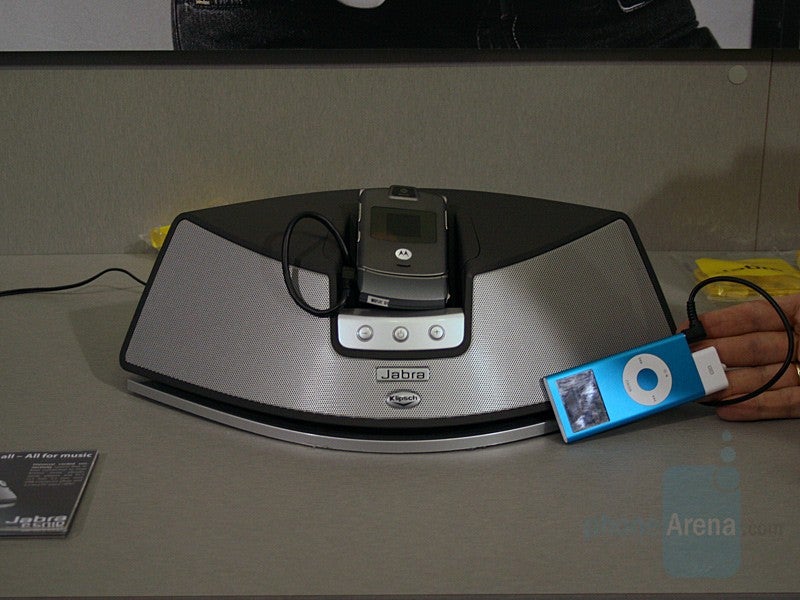
Upgrade to the 655, the 665 by Plantronics is claimed to be the world’s first headset with two-way DSP – in addition to the clearer sound the other party will hear when you use it, the incoming sound would also be filtered in order to reduce the noise. The 665 comes with car-charger in the box – such one was missing in 655’s and 645’s boxes.
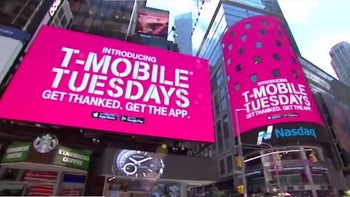

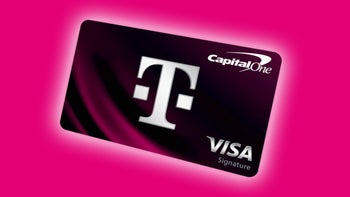
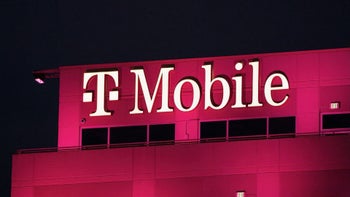
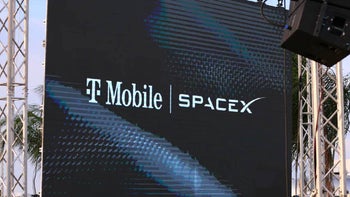
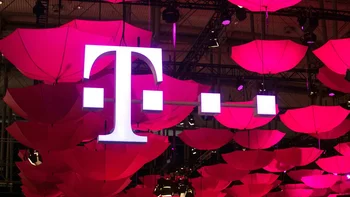
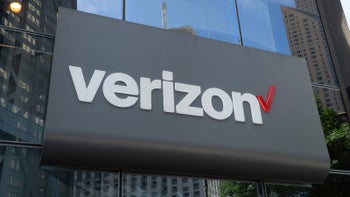
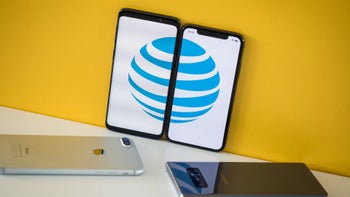
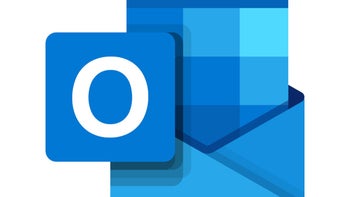
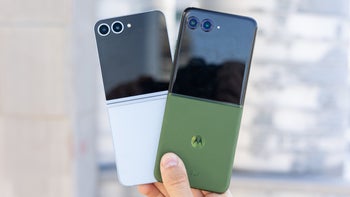
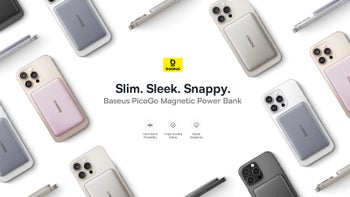

Things that are NOT allowed: